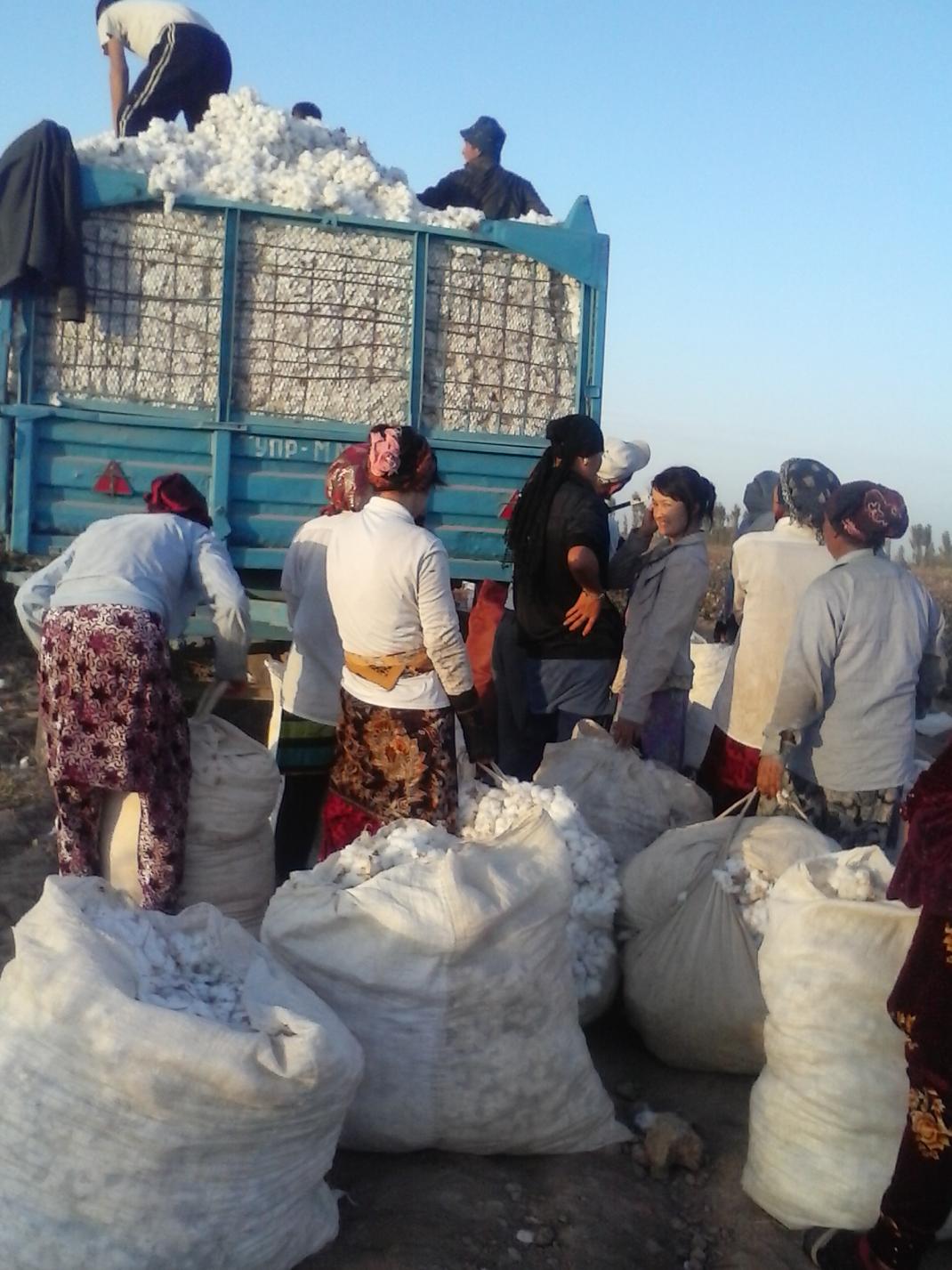
April 16, 2019
Despite a slew of steps taken to curb the practice, forced labor in Uzbekistan’s cotton fields remains widespread, according to a recently released report.
The Uzbek-German Forum for Human Rights (UGF), which has been monitoring Uzbekistan’s cotton sector for ten years, reported earlier this month that despite reforms taken by President Shavkat Mirziyoyev’s government, citizens are still being forced to work in the annual harvest. While medical workers and teachers were not forced en masse to work in the cotton fields for the past two harvest seasons, local government officials increasingly extorted employees of state-owned companies to do the work.
The Mirziyoyev government’s efforts to reduce forced labor, such as increased engagement with civil society activists, higher wages for cotton pickers, and awareness campaigns about the legal consequences of using forced labor are tangible steps forward. But if forced labor is to be eliminated, the government has to end the centrally mandated production quotas that fuel the practice.
Both the International Labour Organization (ILO) and UGF independently found evidence of large-scale forced labor in Uzbekistan in 2018. The ILO estimates about 170,000 thousand adults were forced to work during the 2018 harvest. Instead of being driven at the national level, the ILO said that most of the push for forced labor is happening at the local level. However, UGF found the central government continues to facilitate forced labor through practices such as the forcible transfer of laborers to areas with worker shortages. While local government officials are responsible for much of the current mobilization of forced labor to meet production quotas, the central government has failed to reign in abusive practices and the structures that sustain them, indicating just how deeply rooted and persistent the practice is.
Forced labor is just one of many serious labor issues in Uzbekistan, which include the lack of freedom for voluntary laborers to join independent unions. Good faith efforts by the Mirziyoyev government to address the structural drivers of forced labor are an important measure that, when realized, can open the door to further reform in Uzbekistan’s labor market overall.
Photo:Women carrying bags of cotton to be weighed and loaded onto a truck in Jizzakh region during the 2016 cotton harvest. The government typically requires people to meet a daily quota of cotton picked, from which the costs of food and transport are deducted. If they do not meet the quota, they can go into debt.
